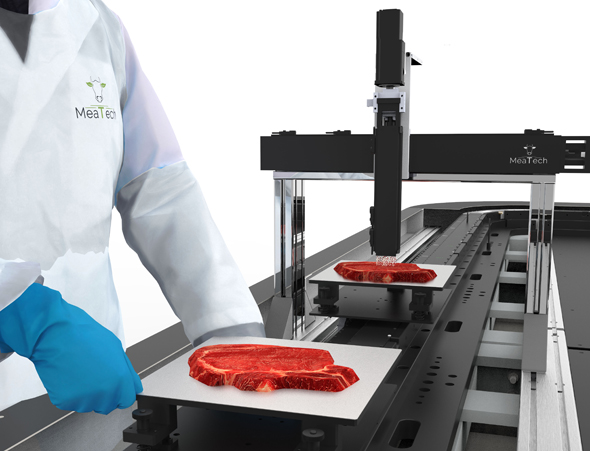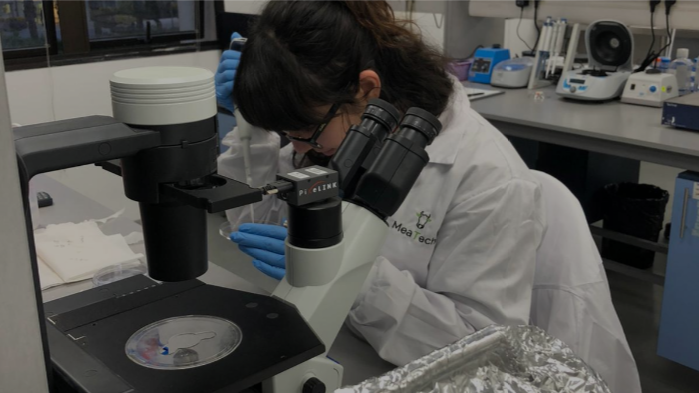The proof may often be found in the pudding, but adventurous eaters may also discover it in evolved food production like Project Carpaccio, as MeaTech Ltd. outpaces other companies in bioprinting “real, clean meat” with muscle and fat cells derived from animals. Recently announcing that their researchers have reached their ambitious goal of bioprinting stem cells that “successfully fused” in a layer of meat, the Israeli startup has reached the first step necessary in their goal to fabricate a quarter-pound steak with progressive technology that eliminates the butchering of animals.
Consumers around the world should continue to find their epicurean expectations transformed as startups continue to make alternative meats palatable. You may already be surprised to see vegetarian and vegan food, along with plant-based ‘burgers,’ making their way onto mainstream menus these days—from the Beyond Burger which you may have encountered at local restaurants to the much-discussed Impossible Whopper now available at Burger King.
Other fast-food corporations are actively engaged in R&D, racing to promote their own versions of the enhanced veggie burger too. Meat alternatives are blossoming into an impressive industry of their own, expected to be valued at around $8.1 billion by 2026. Such foods and snacks processed by conventional methods are often made from soy, wheat, or other types of alternative vegan proteins like seitan.
MeaTech, however, has developed a comprehensive process for 3D printing meat that actually comes directly from animals. MeaTech scientists begin by taking umbilical cord samples (leaving animals unharmed) from animals like cows and then developing the cells into a continuous line of production. As the researchers are tasked with separating fat and muscle cells, they mark them by using different types of bioink for bioprinting—with the cells then incubating and growing into viable products for consumption.
Project Carpaccio came to fruition as scientists from MeaTech 3D printed meat from stem cells using a 3D printer that they customized in their own lab. Sorting and separating cells was no easy feat as they worked to create a texture similar to real meat, along with making the appropriate ink and then fusing the materials.
Companies experimenting with and exploring the future potential of 3D printed meat are beginning to multiply. Consumers may still feel some trepidation about eating anything bearing the vegetarian label (or at the next level, vegan), and even more so regarding food that is extruded from a 3D printer; however as 3D printing technology continues to infiltrate the mainstream, other companies too like Novameat and Redefine Meat are working to bring forth compelling products to dinner tables around the world.
“This is another step on the path to meeting the company’s vision of building a plant for the growing and manufacturing of 3D-printed cuts of meat without needing to slaughter or harm any animals, a technology which could dramatically reduce air pollution, loss of energy sources and the loss of vast areas currently used for raising livestock for slaughter,” said Sharon Fima, CEO and co-founder of MeaTech.
[Source: CTech]
The post Project Carpaccio: MeaTech Makes Real 3D Printed Meat appeared first on 3DPrint.com | The Voice of 3D Printing / Additive Manufacturing.



